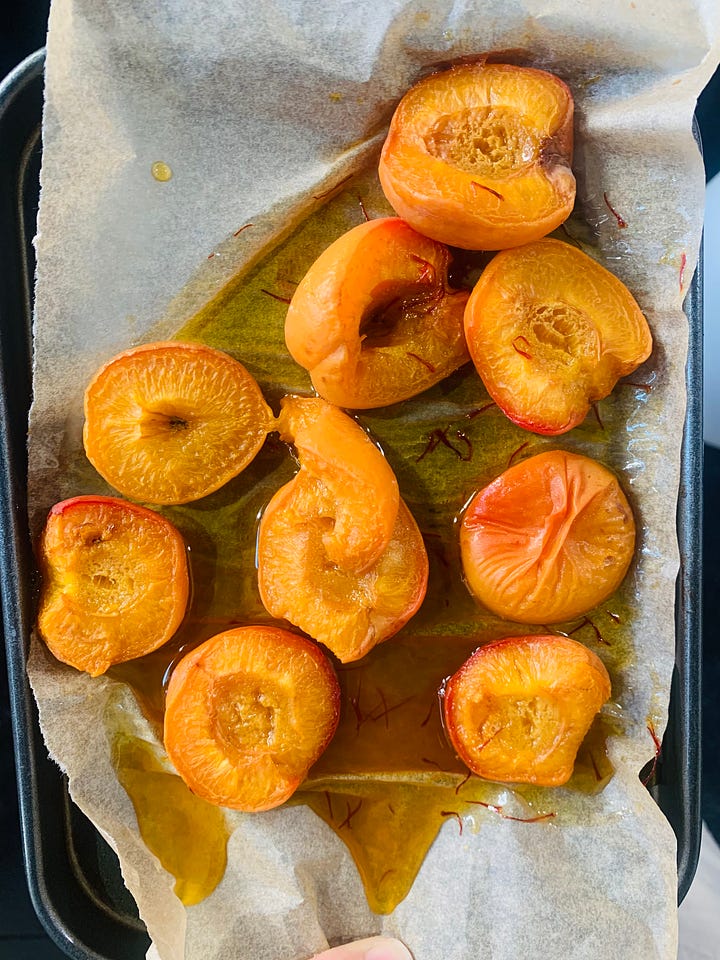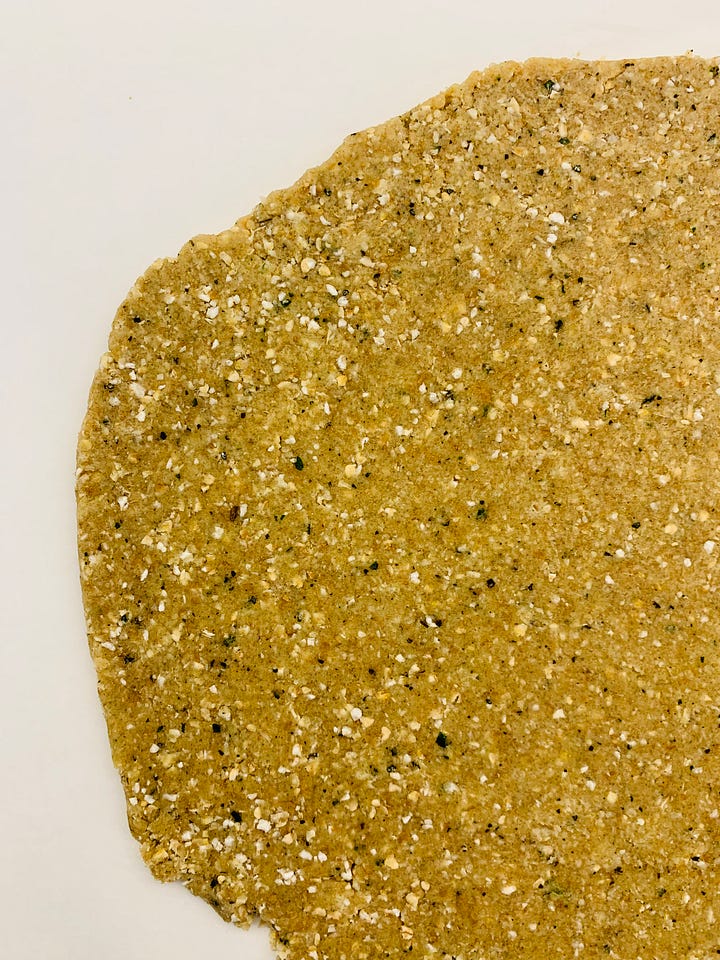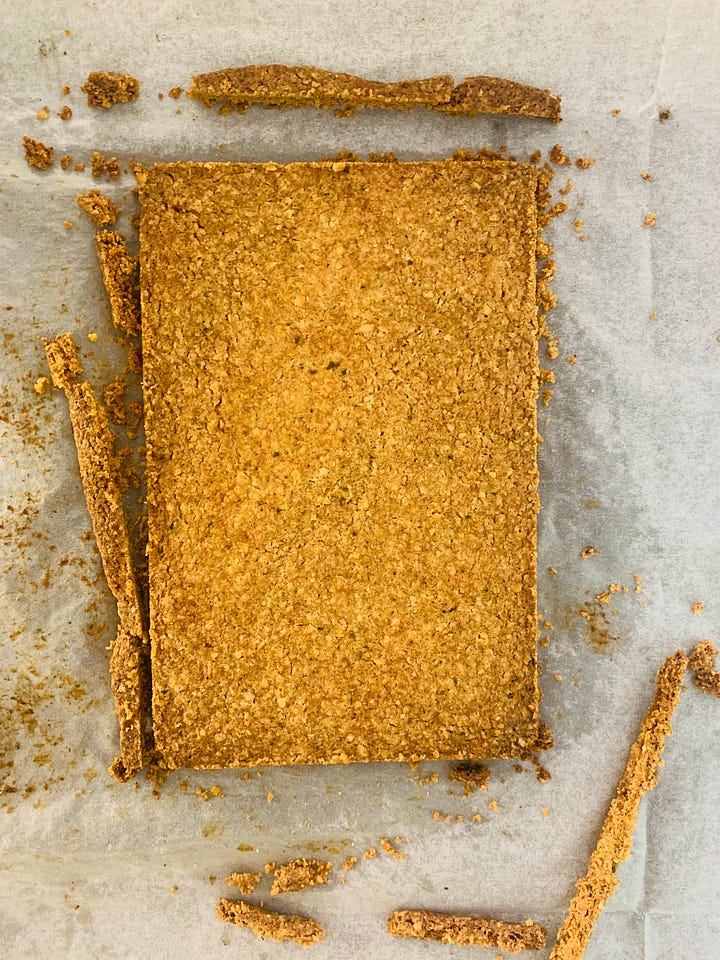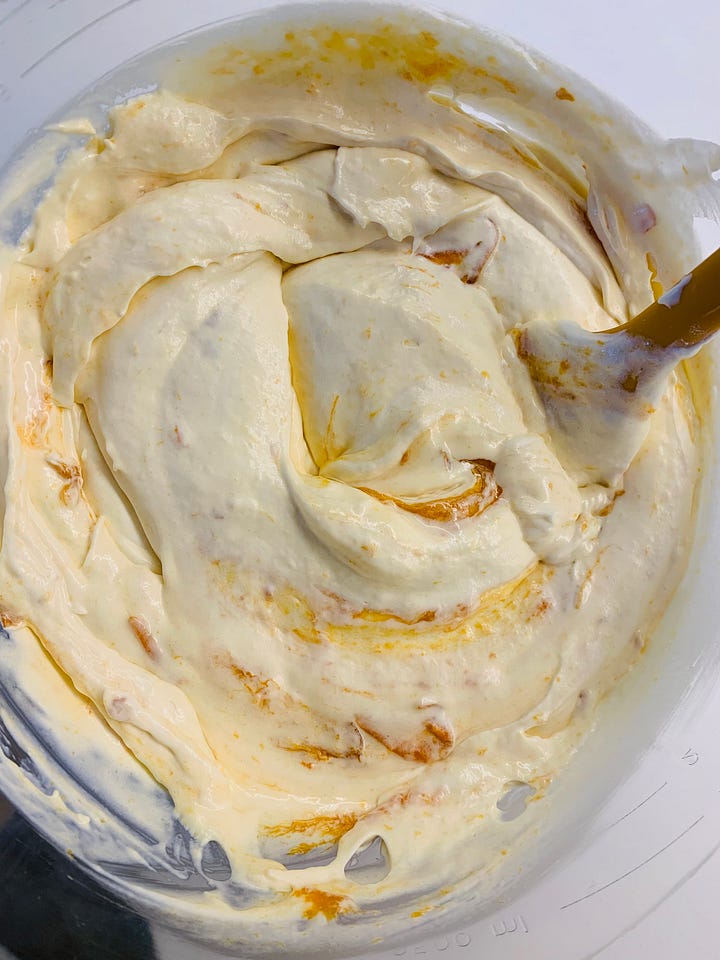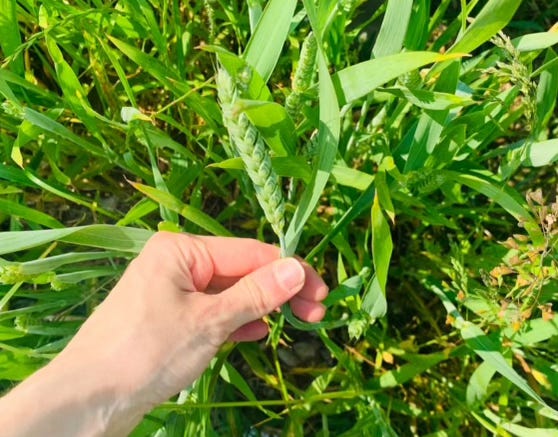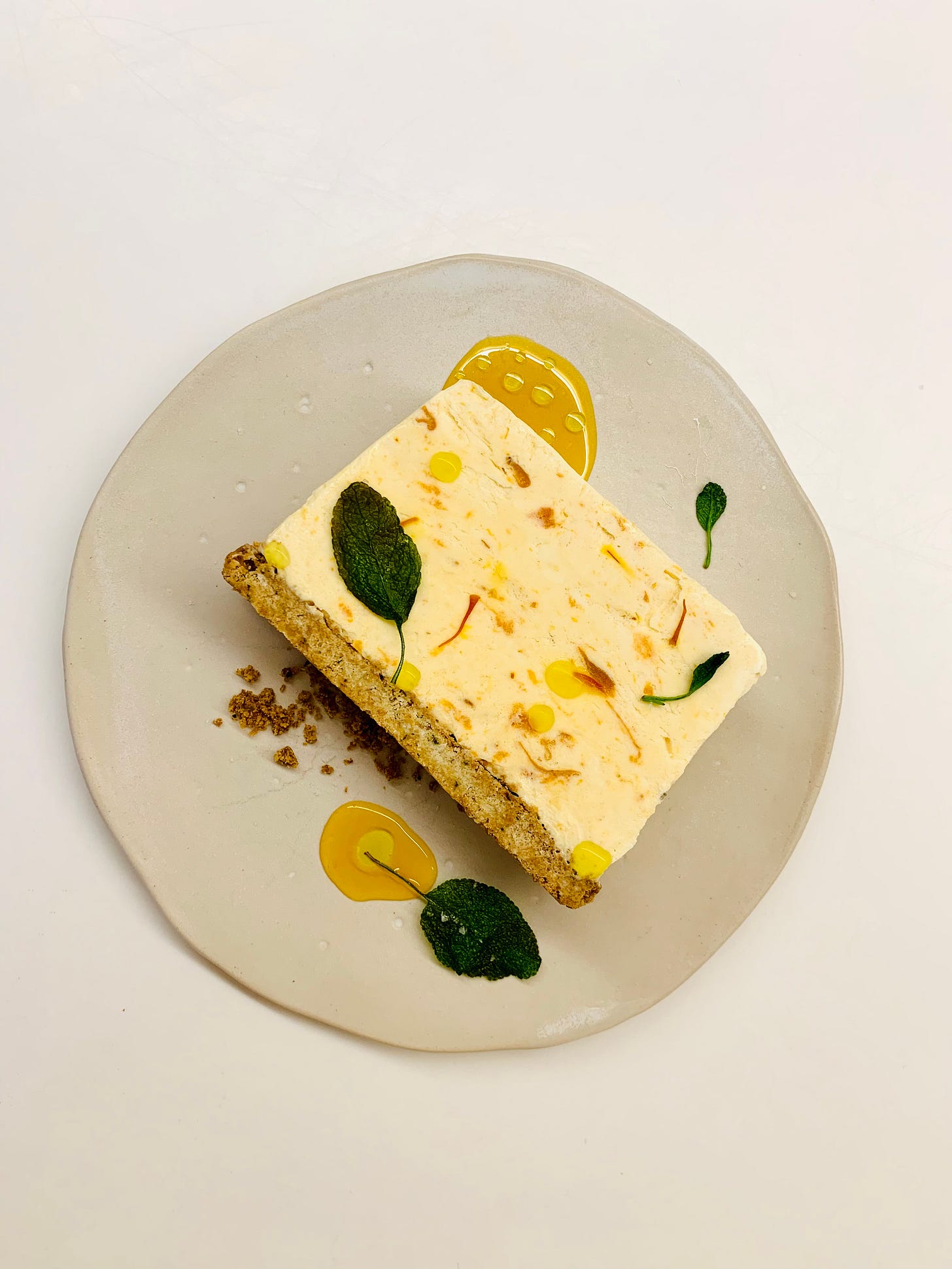A Field Report
and a frozen dessert.
Hello, we’ve made it to newsletter No. 22! Thanks for being here.
If you’re reading this, chances are you’re already a subscriber, a fellow follower of all that is exciting and engaging about the world of baking, from whole grains to seasonal fruit and flavour-forward ingredients.
If this is your first time here, you can expect musings, commentary, ideas and inspiration concerning the act and art of baking, including its more esoteric bits and pieces.
It’s been the hottest week of the year so far in the bakery, routinely 30 degrees by 6:30 am and dropping to a positively cool 26.5 come clean down. Every other bullet point on my daily list of tasks has been a prompt to hydrate, and despite this, I find myself here, Sunday morning, writing to you in a state that can only be described as raisin-like in both mind and body.
As I sit here, spent beyond even my most exhausted vanilla pod, I thought I’d share some pictures from last Sunday’s visit to the Stringers Farm; it was a good opportunity to catch up over crops and see how things were fairing before harvest.


Two different wheat varieties, sown on the same Spring day, side by side. The Øland wheat on the left is a long straw variety originating from Sweden. It gets off to a quick start, which, along with its height, helps to naturally suppress competing weeds, which is hugely favourable in organic farming systems.
We’ve come to use a lot of Ølands at the bakery, some from this farm, along with more grown a bit further south. We combine it with other varieties in varying amounts for both bread and pastry applications. It feels good in the hands, smooth and strong enough for breads that utilise a gentle folding approach and enjoyable to shape.
Its gentle strength is appreciated in laminated doughs. It supports the heft of multiple butter layers without compromising the final texture, holding lamination and contributing softness and flake in the right places. Its true wheaty flavour is best appreciated in wholemeal shortcrust and flaky pastries, biscuits and simple cakes, especially those that combine elements of fresh cream and berries, which seem particularly suited to it.
In contrast, Paragon is a modern wheat variety, visibly shorter in stature and, from a baker’s perspective, a little less interesting to use and probably a lot less interesting for the organic farmer to grow. That’s not to say it doesn’t serve a purpose, though; its reliability mitigates risk, which is essential for the current economics of farming life. Its bread-making quality is the benchmark to which all other Spring wheat is judged, and it offers good disease resistance; as such, it is one of the most dominant Spring wheat varieties.
Many think all grain is the same, but to plant it, see it grow, harvest it, mill it and bake with it is to know they are all so different. That’s why as a bakery, we’ll continue to use a diverse range of varieties, from the ones that offer the farmer and us some consistency to the ones that overload us with sensory joy when mixing, shaping and tasting. As we do, we’re learning what characteristics we need in varieties in the future to create products that serve our customers whilst also playing our role in actively shaping the landscape from which they come. As scorching weeks like this one are set to be more frequent, diversity and resilience in the crop, the farmer, and the baker become ever more important.
The apricot abundance continues, and with it, my exploration into its many flavours affinities. In desperate need of something cool, I turned to the parfait. By far my preferred frozen dessert to make, its seemingly complicated process is a foil; it’s relatively quick to come together and requires no special equipment besides a thermometer. If you’ve never made parfait before, read through the steps a few times before starting; the different stages happen simultaneously; if needed, press pause on the syrup just after the sugar has dissolved to avoid overshooting the 116-degree temp. This gives you time to get your cream to the thick trail stage, which you can hold in the fridge whilst you get the syrup to the right temperature.
Critical moments for success include making sure the egg yolks don’t skin over as they sit waiting to receive the syrup, ensuring the syrup reaches 116°C and not over-whipping the cream.
Apricot Parfait with Salted Sage & Naked Oat Biscuit
To make life a little easier for myself, I prepared the three components for this dessert over a few days. Day 1, prepare the apricots; Day 2, the biscuit and Day 3, the parfait. By Day 4, I had forgotten about it, and my weary self was overjoyed that my past self made an effort, and I think you will be too.
The parfait can be made as shown here with the biscuit base or used to create ice cream sandwiches with the same biscuit recipe. Either way, I love the flavour and texture. Sage has a strong rapport with anything fatty, so it feels at home in this buttery biscuit alongside dense, creamy parfait. Tender young and fresh leaves hold equally tender and fresh flavours. When fried in oil and sprinkled with coarse sea salt flakes, its umami punch and bitter crackle add depth and texture.
At first glance, sage and saffron seem at odds, the closest they get is side by side in the index of a food compendium, but combined with honeyed apricots, the disparate ingredients are more than the sum of their parts, making a dessert that evokes all that is good about the heady, heat of summer.
For the Parfait
200g Apricots (weight minus stones)
50g Summer or Spring honey, something mildly floral or herbaceous
Good pinch saffron threads
1/2 tsp flaky sea salt
65g egg yolk
35g water
110g golden caster sugar
1 tsp flaky sea salt
500g double cream
Method
To make the apricot compote…
Halve the apricots and remove the stone. Add to an oven-proof baking dish or roasting tray. Bloom the saffron threads in a bowl with a couple of tablespoons of boiling water, add the honey and sea salt and mix, then pour over the apricots. Roast in the oven at 150°C until the flesh has collapsed to a softness that will easily break down when pressed.
Remove from the oven and set aside to cool. Once cool, lift the halves from the syrup that has formed and mash lightly with the back of a spoon or fork to create a compote that need not be completely smooth. Reserve the honey syrup for serving.
To make the parfait…
Prepare the loaf tin by lining it with cling film.
Place the yolks in the bowl of a stand mixer fitted with a whisk attachment.
Add the sugar to a small saucepan along with the water.
Measure the double cream into a large bowl (preferably stainless steel) and grab a large balloon whisk.
Once all of the above is assembled, set the mixer on low to slowly break up the egg yolks and prevent their surface from drying.
At the same time, heat the saucepan and stir to encourage the sugar to dissolve; increase the heat and allow the syrup to thicken, use a thermometer and heat until it reaches 116°C.
When it hits 116°C, carefully pour the hot syrup into the mixer (whilst running), incorporating it into the egg yolks.
Once it is all added, increase the mixing speed to medium and allow to whisk for 8-10 minutes. During this time, whip the double cream until thick enough to see it hold a slight trail as you lift your whisk.
After 8-10 minutes, the bowl of the mixer should feel cool, and the foam should be much lighter in colour and approximately four times the original volume.
Pour half of the cream into the egg foam and whisk briefly to incorporate, followed by half of the apricot puree, mixing until barely combined. Add the remaining cream and fold with as few strokes as possible, leaving some streaks of cream. Add the remaining half of the apricot puree and continue to fold. It is ok to leave some little ripples of puree.
Pour the mixture into the prepared tin and place in the freezer overnight.
